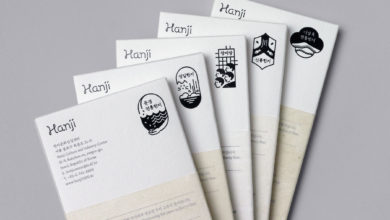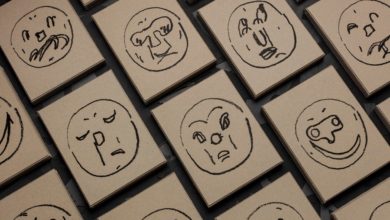[ad_1]
Text by Richard Baird.
BP&O’s LogoArchive began in 2015 as an Instagram account documenting the form language and abstract form-making of corporate identity designers and commercial artists that developed between 1920–1989. This now has a following of over 160,000 people, and was then expanded upon in 2018 to include a series of zines published by BP&O. These include seven numbered issues and three Extra Issues, with a fourth due out soon. The LogoArchive.International programme intends to develop this further. By giving geo-specific teams access to LogoArchive’s extensive archive of logos we hope to continue in the publishing tradition of building cultural bridges and catalysing conversation around the cultural production of individual nations.
LogoArchive on Instagram collated and centralised an archive of logos from a diversity of commercial artists and corporate identity designers who worked under unique cultural conditions of time and place. From this perspective, this new programme could then be understood as an incremental process of decentralising LogoArchive with the intention of empowering individuals from across the world to present their design history from their point of view.
These new accounts will be posting that which best represents logo design from their respective countries and use Instagram Stories and IGTV as “free spaces” in which to share the visual culture of their country. In this way, individuals from or located in these nations can best decide the what and how. The logos serve as an eye-catching draw to each account to discover more. New colour palettes, away from the white on black, deliver a joyful and new way to engage with the work of the past, channeling the more colourful issues of the LogoArchive zine.
LogoArchive.Italia was the first to begin publishing logos and supporting Italian designers, studios and blogs. A big thank you to Filippo and Giulia for taking on the project. This was followed by the launch of LogoArchive.GreatBritain, expertly run by Graham, Darren and Naomi, then LogoArchive.USA kindly managed by Nick and Matt, and LogoArchive.Poland overseen by Damian and Patryk.
It is a big project, one that I hope will be an exciting first step to giving designers a bit more of a hand in the collation and movement of their visual culture on social media. I am currently working on building teams for Canada and Mexico, and looking for help to support Yu with LogoArchive.Japan. I also had a fantastic call with Roger Van Den Bergh about LogoArchive.Nederland. Roger, as an independent designer, worked for Benno Wissing at Total Design and James Pilditch at Allied International Designers and with the likes of Tom Geismar, Ivan Chermayeff, Walter Landor and Alan Siegel. He has had an incredible career, one that continues with Onoma, and I am looking forward to working with him to share some of his insights and archive.
I was also delighted to have Maryan and Viktor of Ukrainian Logos choose LogoArchive to help them to share the visual culture of Ukraine with more people. Having spoken with Maryan, I found that he shared the same passion and enthusiasm for graphic design and cultural transmission. He had felt that his country was, externally, poorly represented, and internally, lacked the materials to inspire and educate emerging Ukrainian designers, often learning of the work of Poland and other countries at University rather than that of Ukraine. Both Maryan and Viktor have a lot of great ideas, and developing an exhibition and publication, which BP&O will help them publish. They are running LogoArchive.Ukraine.
To develop the programme further, and to acknowledge the geo-political changes that occurred within the timeframe that LogoArchive works within, LogoArchive.DDR, run by Norman, will seek to bring to light the cultural production, graphic design and logos of the of the former German Democratic Republic. Die Wende (German Reunification) and the end of the DDR provides a unique opportunity to understand how institutions and manufacturing entities were identified in what was described as a socialist “workers’ state”. To reflect this, LogoArchive.DDR has its own unique colour palette, drawing on Socialist housing projects of grey concrete and red tiling, and the common mode of transport, the Trabant.
LogoArchive.Italia and the LogoArchive.International programme featured on the respected and beautifully written and curated Italian visual culture website FrizziFrizzi. The article is in Italian, however, Google translate works well, and captures the wonderful and supportive sentiments of the site’s founder Simone. Thank you Simone. You can read the article here.

And finally, LogoArchive.Mexicanos just launched. Run by the enthusiastic Mina Nuño. She chose an earthy green colour palette to distinguish it from Italia.
This is the first stage, with geo-specific events and publications to follow as these accounts become more established. Please consider supporting those accounts in your country, as they help support the designers, studios, blogs and institutions of their’s.

[ad_2]
Source link

















